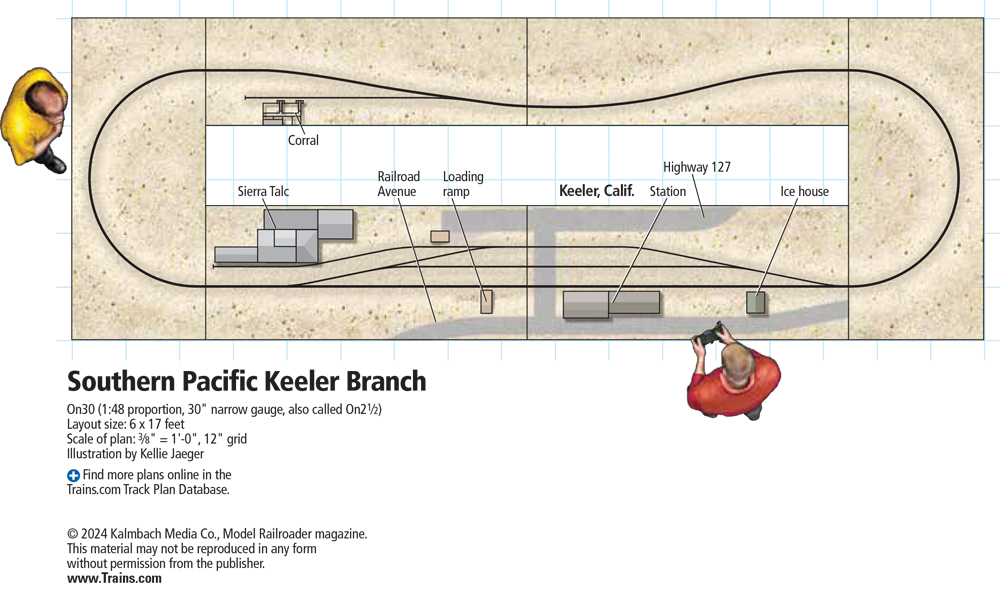
Facts and features Name: Southern Pacific Keeler BranchScale: On30 (1:48 proportion, 30″ narrow gauge, also called On21⁄2)Size: 6 x 17 feetPrototype: SP narrow gaugeLocale: Owens Valley, CaliforniaEra: 1950sStyle: sectionalMainline run: 36 feetMinimum radius: 24″Minimum turnout: No. 5Maximum grade: noneBenchwork: open grid Height: 50″Roadbed: 1 x 4 clear pineTrack: Micro Engineering code 83Scenery: sifted, demagnetized […]
Read More…
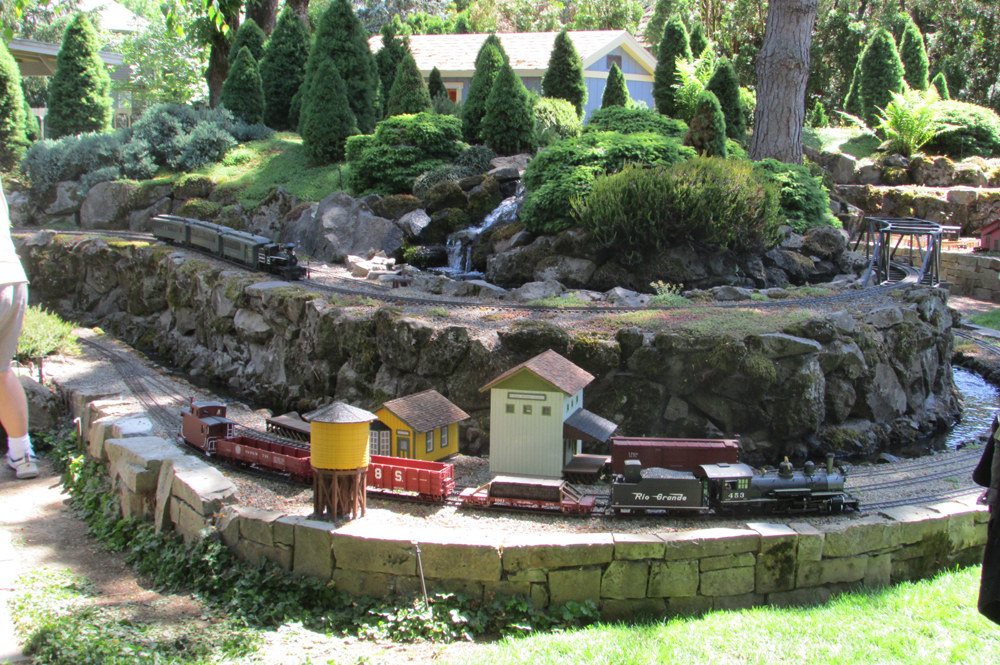
What is an operating session? Operating sessions attempt to mimic the activities we see on a full-size railroad. To support a successful operating session, a garden railroad must have certain characteristics. There must be multiple industries where cars can be spotted. The more unique industry locations on the railroad, the better. These car spots must […]
Read More…
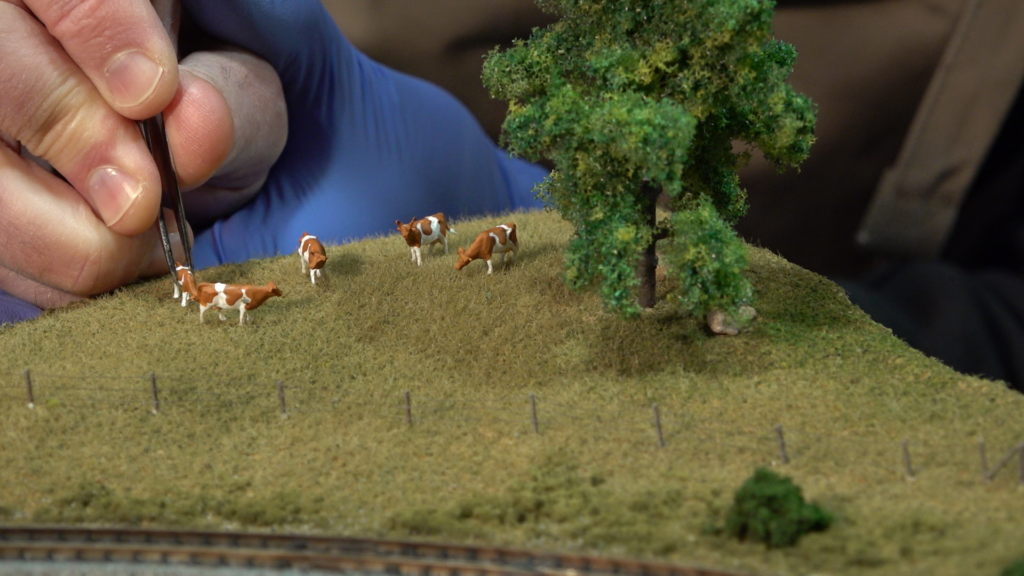
Host David Popp is all set to add the final scenery details on his N scale (1:160) T-Trak module. Part of his effort includes the installation of chain-link and barbed wire fence options. After adding the last few details, there’s just one thing left to do…assemble and wire an assortment of modules and get a […]
Read More…
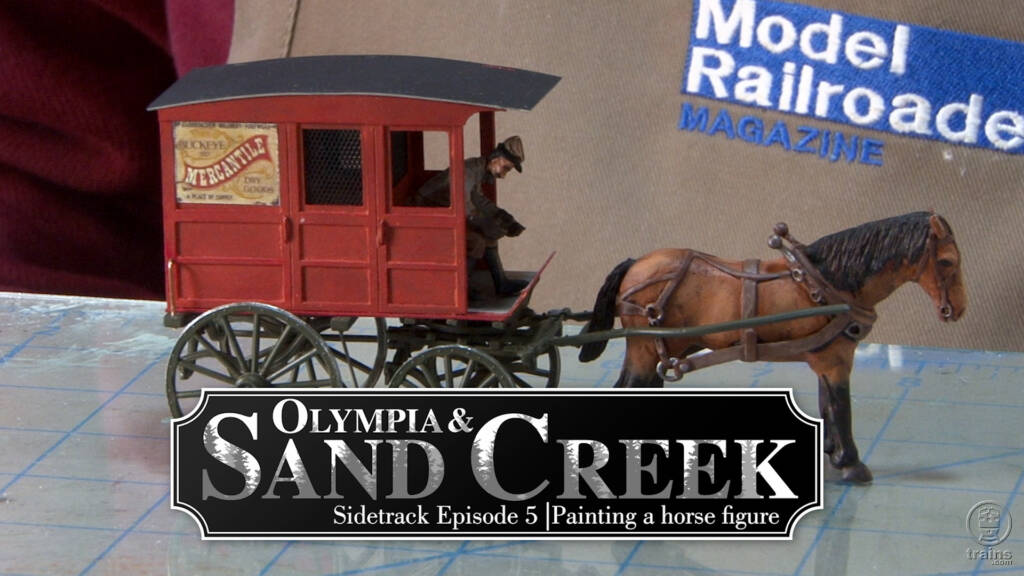
As the Sidetrack Series trots along, David shares his technique for painting the ponies. But following his savvy advice, he begins by decorating the details (harness, hitch, etc.). After painting the body and other fine features, David then demonstrates how to give the steed a suitable, well-weathered appearance. But don’t hitch your horse to this […]
Read More…
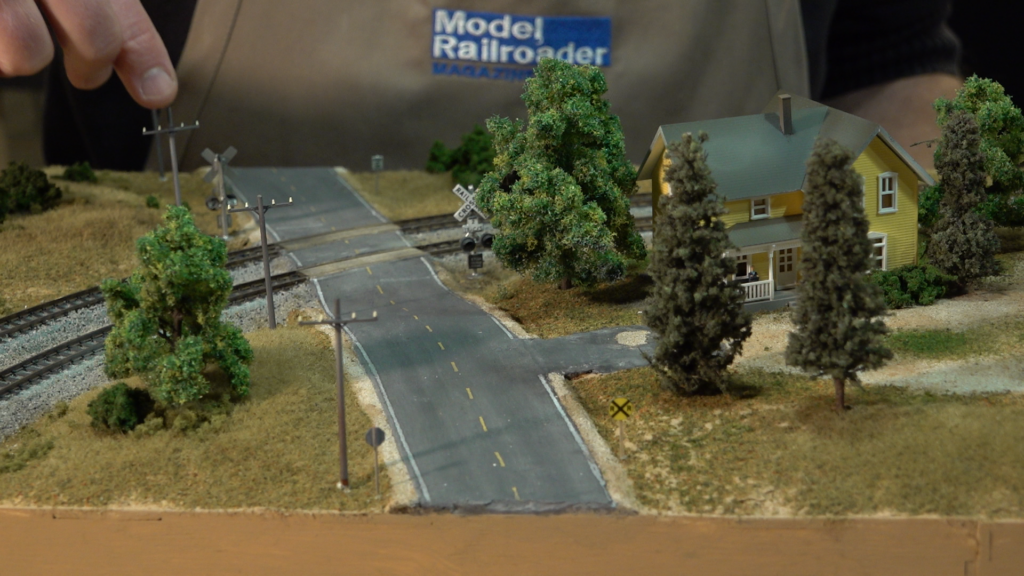
David Popp’s scenery work is whittling down to assembling and placing various road signs and line poles on the N scale (1:160) T-Trak module. Progress is moving closer to completion, so be sure to catch up with all of David’s efforts and helpful insights throughout the entire T-Trak series…exclusively on Trains.com Video! […]
Read More…
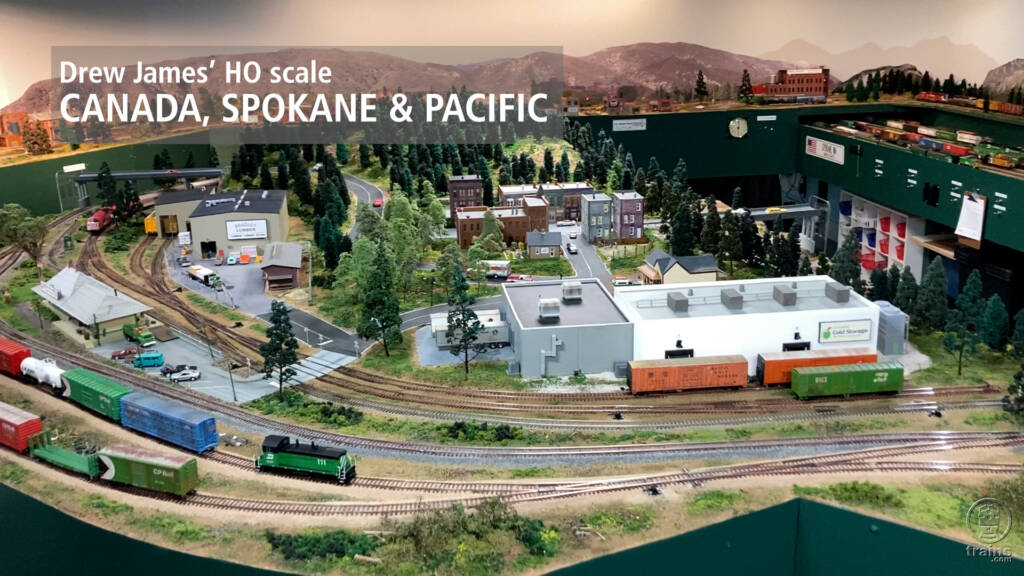
Drew James’ CS&P HO scale model railroad portrays a bridge line operation connecting Burlington Northern and Canadian Pacific railroads in the 1980s. You can read more about the layout in the June 2024 issue of Model Railroader magazine. But first, you’ll want to see the action on this distinctive Pacific Northwest setting — where you’ll […]
Read More…
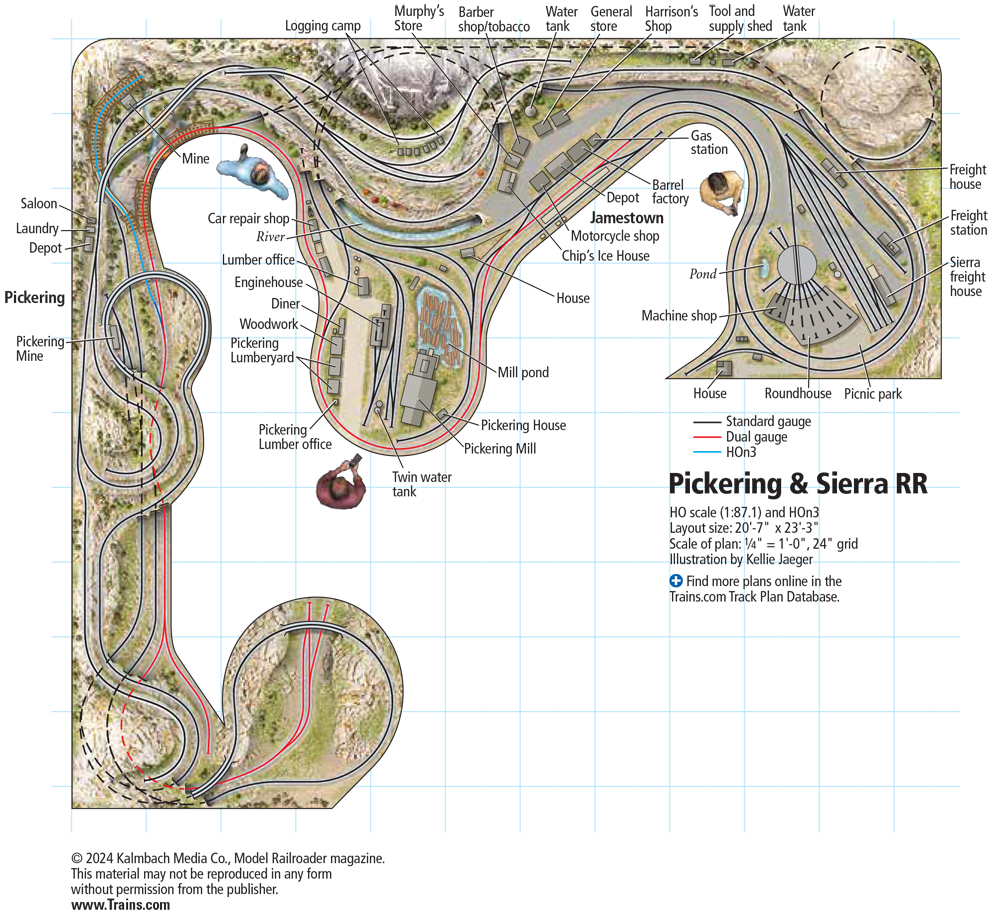
Facts and features Name: Pickering & Sierra RRScale: HO (1:87.1), HOn3, dual gauge, and HOn21⁄2 (dummy)Size: 20′-7″ x 23′-3″ Prototype: freelanced, inspired by Pickering Lumber Co. and Sierra Ry.Locale: Sierra Nevada mountainsEra: 1920s to 1940sStyle: walk-inMainline run: 220 feetMinimum radius: 17″ (logging)Minimum turnout: No.4Maximum grade: 4%Benchwork: open gridHeight: 36″ to 57″Roadbed: plywood and HomasoteTrack: […]
Read More…
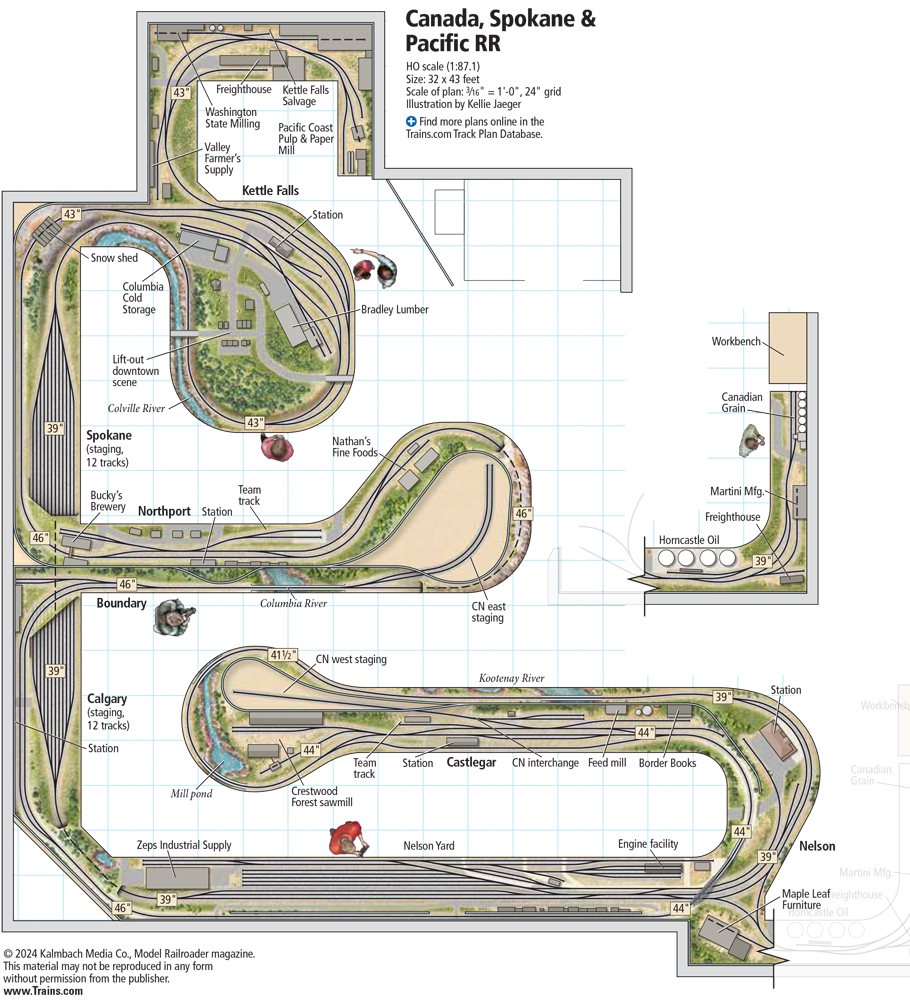
Facts and features Name: Canada, Spokane & PacificScale: HO (1:87.1)Size: 32 x 43 feetPrototypes: Burlington Northern, Canadian PacificLocale: Pacific NorthwestEra: June 1981Style: walk-inMainline run: 260 feetMinimum radius: 36″Minimum turnout: No. 6Maximum grade: 2%Benchwork: L-girderHeight: 39″ to 46″Roadbed: HomasoteTrack: Atlas code 83 flextrackScenery: plaster gauze over cardboard web covered with Structolite Backdrop: LARC Products photo […]
Read More…
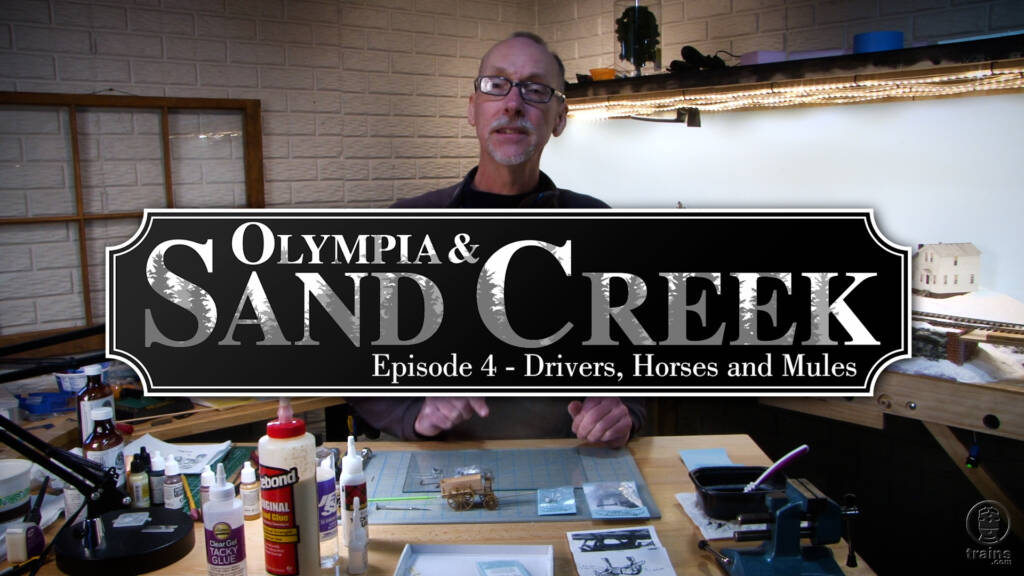
Back on the sidetrack, David resumes construction of the drivers, plus the horses and mules used to pull the various wagons and carts he’ll place into his On30 layout scenes. Initial efforts in this episode involve the basic material prep and assembly of all the white metal parts and pieces in the selected kits. By […]
Read More…
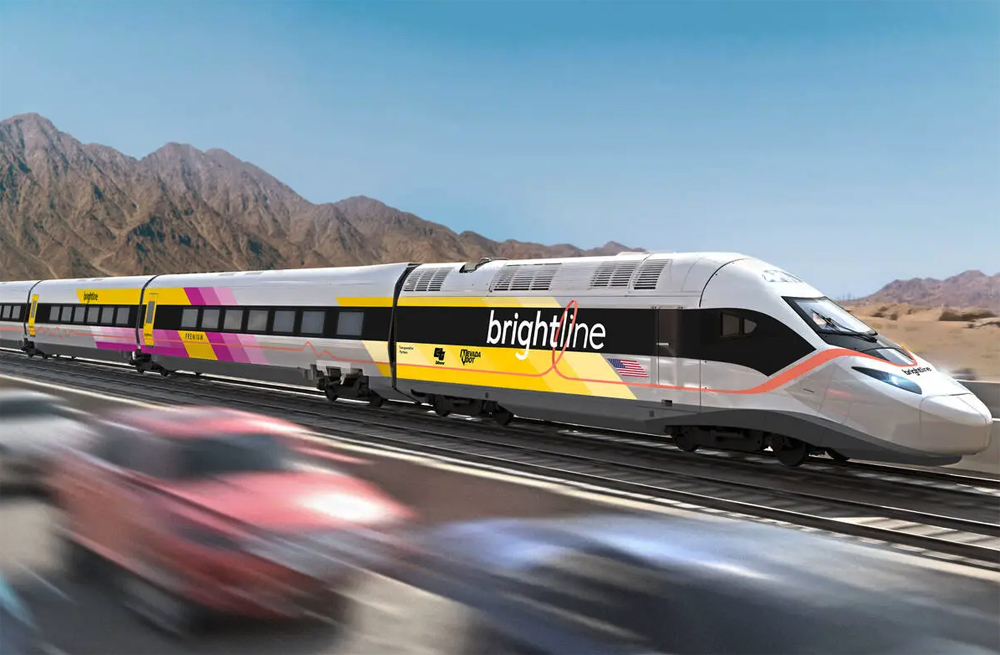
LAS VEGAS, Nev. — The Brightline West project is about to get its official kickoff. While various surveying and other preparation work has been in progress for several months, a formal groundbreaking ceremony is set for Monday in Las Vegas at the planned site for the high-speed project’s Las Vegas station. Transportation Secretary Pete Buttigieg, Brightline […]
Read More…
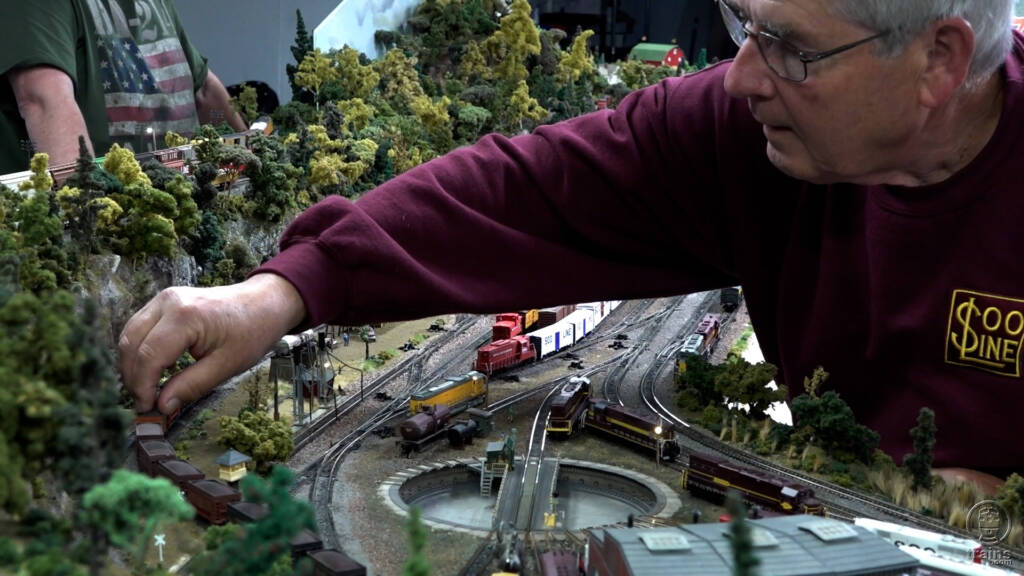
Enjoy an insider’s look at an informal operating session hosted on Steve Miazga’s N scale (1:160) model railroad, set in northern Wisconsin. While you can read about the construction of this 14 x16-foot basement layout in Trains.com bonus articles and Model Railroader magazine’s September 2018 issue, the real thrill comes from seeing Steve and his […]
Read More…
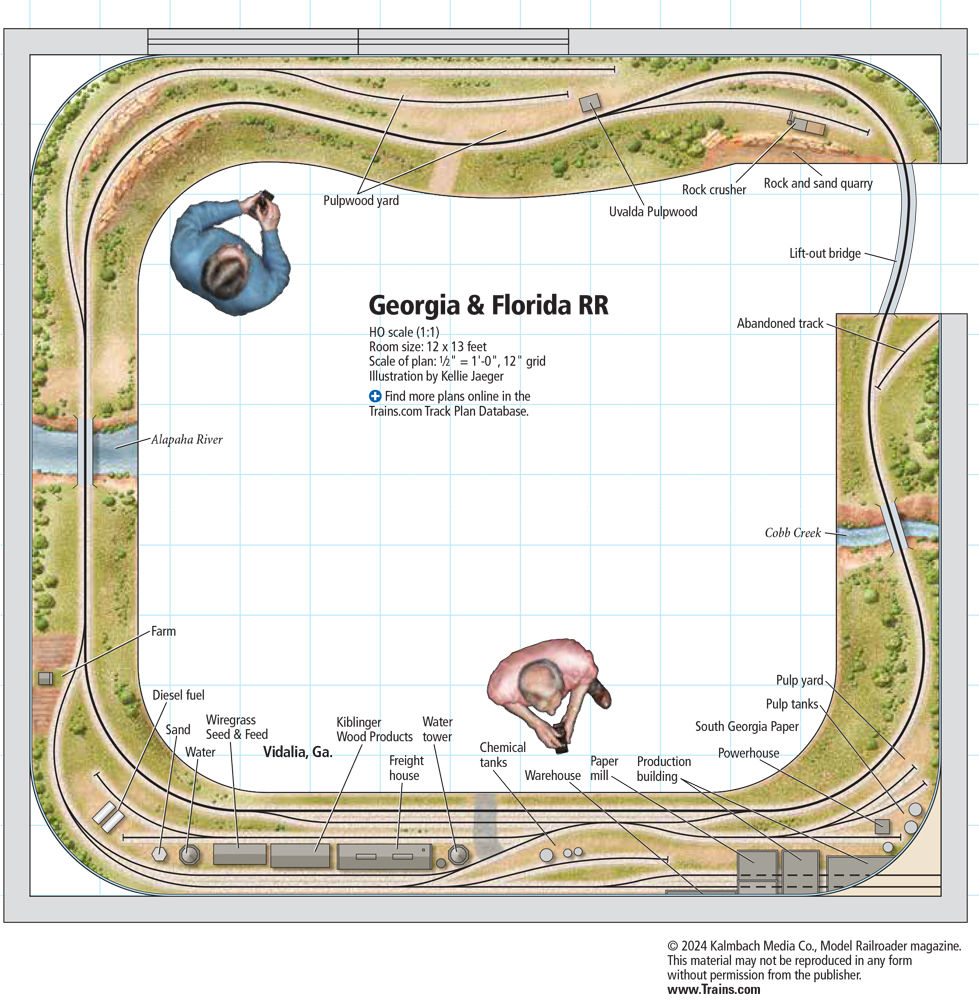
Facts and features Name: Georgia & Florida RRScale: HO (1:87.1)Size: 12 x 13 feetPrototype: Georgia & FloridaLocale: Central and South GeorgiaEra: late summer, 1966-1972Style: around the wallsMainline run: 55 feetMinimum radius: 24″Minimum turnout: No. 4Minimum grade: noneBenchwork: open gridHeight: 40″Roadbed: corkTrack: Atlas code 83 flextrackScenery: cardboard strips covered with plaster gauze and SculptamoldBackdrop: 1⁄8″ […]
Read More…












